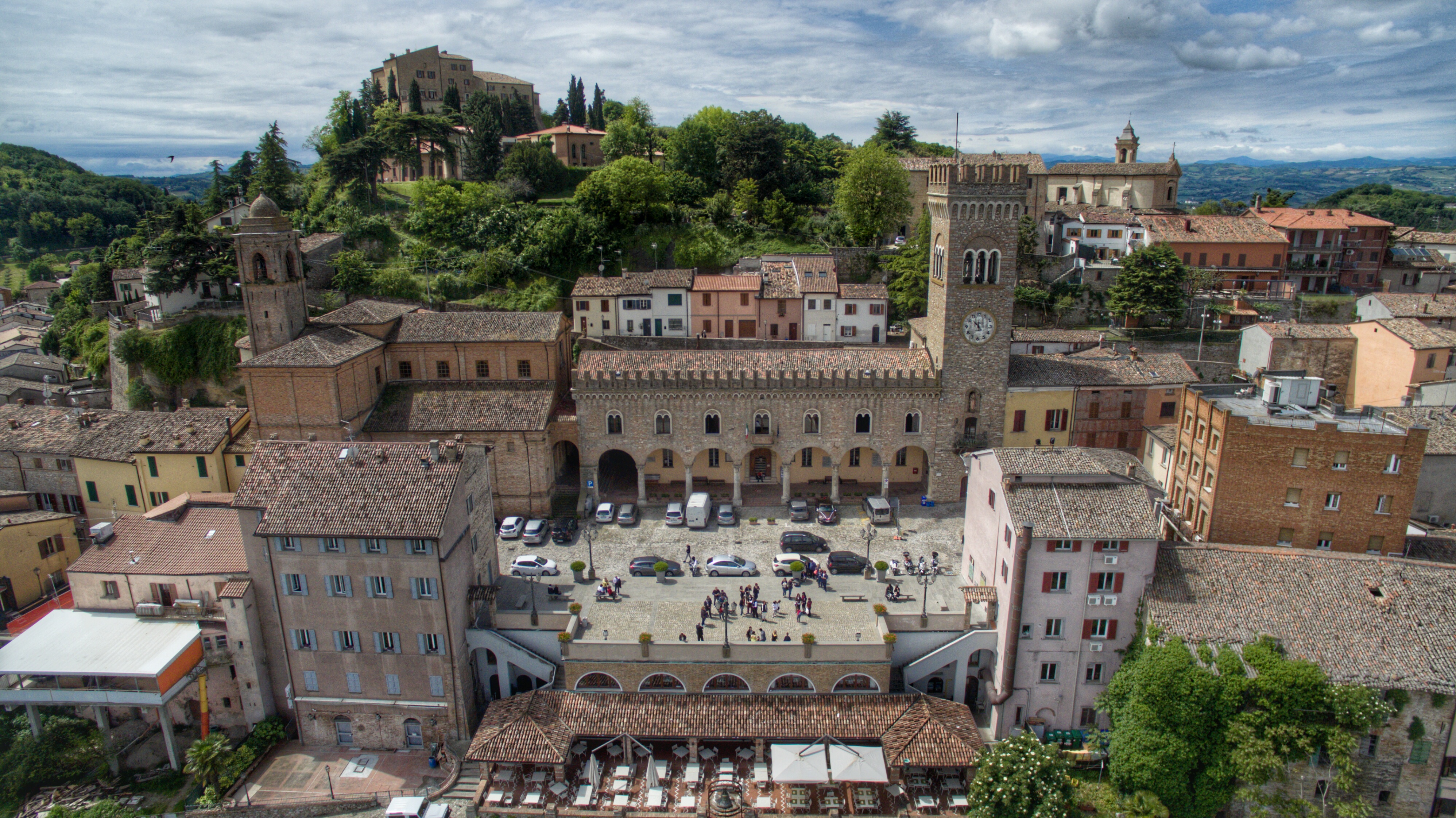Bertinoro on:
[Wikipedia]
[Google]
[Amazon]

 Bertinoro () is a ''
Bertinoro () is a ''
Official website
Hilltowns in Emilia-Romagna {{EmiliaRomagna-geo-stub

 Bertinoro () is a ''
Bertinoro () is a ''comune
A (; : , ) is an administrative division of Italy, roughly equivalent to a township or municipality. It is the third-level administrative division of Italy, after regions () and provinces (). The can also have the City status in Italy, titl ...
'' (municipality) in the province of Forlì-Cesena
The Province of Forlì-Cesena () is a province in the Emilia-Romagna region of Italy. Its capitals are the cities of Forlì and Cesena. The province has a population of 394,273 as of 2016 over an area of . It contains 30 '' comuni'' (: ''comu ...
, in the Italian region of Emilia-Romagna
Emilia-Romagna (, , both , ; or ; ) is an Regions of Italy, administrative region of northern Italy, comprising the historical regions of Emilia (region), Emilia and Romagna. Its capital is Bologna. It has an area of , and a population of 4.4 m ...
. It is located on hill Mount Cesubeo, in Romagna
Romagna () is an Italian historical region that approximately corresponds to the south-eastern portion of present-day Emilia-Romagna, in northern Italy.
Etymology
The name ''Romagna'' originates from the Latin name ''Romania'', which originally ...
, a few kilometers from the '' Via Emilia''.
History
There are remains of a settlement dating from theIron Age
The Iron Age () is the final epoch of the three historical Metal Ages, after the Chalcolithic and Bronze Age. It has also been considered as the final age of the three-age division starting with prehistory (before recorded history) and progre ...
, next to the ''frazione
A ''frazione'' (: ''frazioni'') is a type of subdivision of a ''comune'' ('municipality') in Italy, often a small village or hamlet outside the main town. Most ''frazioni'' were created during the Fascist era (1922–1943) as a way to consolidat ...
'' of Casticciano. As for Bertinoro itself, it was probably a strongpoint on the Roman road connecting Forlì to Rimini
Rimini ( , ; or ; ) is a city in the Emilia-Romagna region of Northern Italy.
Sprawling along the Adriatic Sea, Rimini is situated at a strategically-important north-south passage along the coast at the southern tip of the Po Valley. It is ...
. Later, during the barbaric invasions, it was moved to the current location.
In 1177 the castle, already well developed and known as ''Castrum Cesubeum'', housed the emperor Frederick Barbarossa
Frederick Barbarossa (December 1122 – 10 June 1190), also known as Frederick I (; ), was the Holy Roman Emperor from 1155 until his death in 1190. He was elected King of Germany in Frankfurt on 4 March 1152 and crowned in Aachen on 9 March 115 ...
. The named changed to ''Castrum Brittinori'' during the reign of Otto III, becoming seat of the countship.
Main sights
*The ''rocca'' (castle), built around the year 1000. It is now home to the Museum of Holy Arts and a conference center of theUniversity of Bologna
The University of Bologna (, abbreviated Unibo) is a Public university, public research university in Bologna, Italy. Teaching began around 1088, with the university becoming organised as guilds of students () by the late 12th century. It is the ...
.
*The Communal Palace, built in 1306 by Pino I Ordelaffi
*Colonna delle Anelle ("Column of the Ring" or "Column of hospitality"). It is a column in white stone with 12 rings erected in 1300 by the noble families of the town to show their hospitality. Each one of the rings corresponded to one family, when the foreigners arrived in the town and tied the horse bridles to a ring they selected their host.
*The Cathedral
A cathedral is a church (building), church that contains the of a bishop, thus serving as the central church of a diocese, Annual conferences within Methodism, conference, or episcopate. Churches with the function of "cathedral" are usually s ...
, built in the 16th century
*The ''pieve
In Italy in the Middle Ages, a ''pieve'' (, ; ; : ''pievi'') was a rural church with a baptistery, upon which other churches without baptisteries depended. ''Pieve'' is also an Italian and Corsican term signifying the medieval ecclesiastical/a ...
'' (church) of San Donato, in the ''frazione'' of Polenta. It became famous as the object of a poem by Giosuè Carducci. It has maintained parts of the original late 9th century edifice.
Culture
Bertinoro is home to a "Hospitality Festival". Held in the first weekend of September, it encompasses an entire night of music, dances and events (between Friday and Saturday), some historic reenactments, and the final hospitality rite (Sunday late morning). In this ceremony anyone can be hosted for meal by a family in the town simply taking one of the envelopes tied to the rings of the Hospitality column (which inside has the name of the hosting family).People
* Obadiah ben Abraham, also known as "The Bartenura" after the town, or "RAV-רע"ב", an abbreviation for "Rabbi Ovadia fBartenura", was a 15th-century rabbi and commentator of theMishnah
The Mishnah or the Mishna (; , from the verb ''šānā'', "to study and review", also "secondary") is the first written collection of the Jewish oral traditions that are known as the Oral Torah. Having been collected in the 3rd century CE, it is ...
.
International relations
Twin towns — sister cities
Bertinoro is twinned with: * Ale, Sweden * Kaufungen, Germany * Budești, MoldovaReferences
External links
Official website
Hilltowns in Emilia-Romagna {{EmiliaRomagna-geo-stub